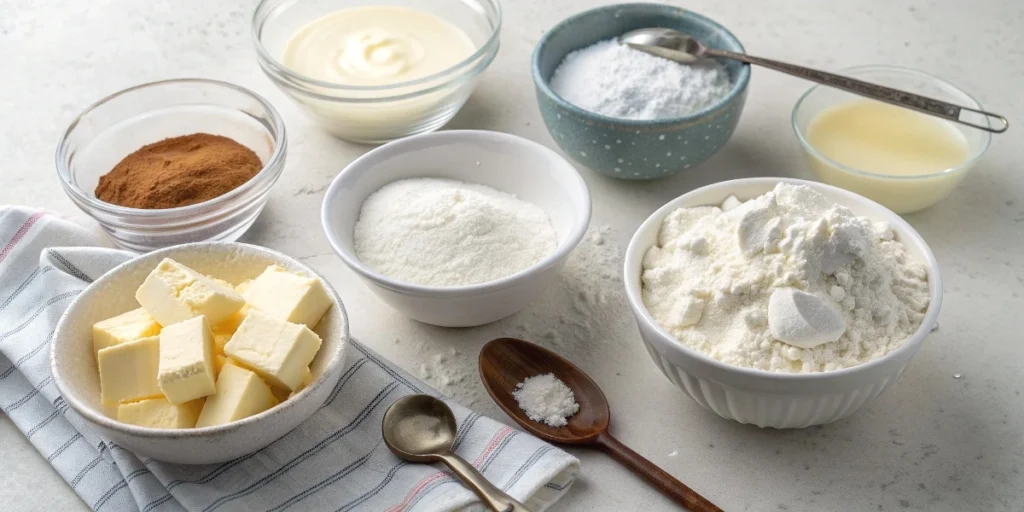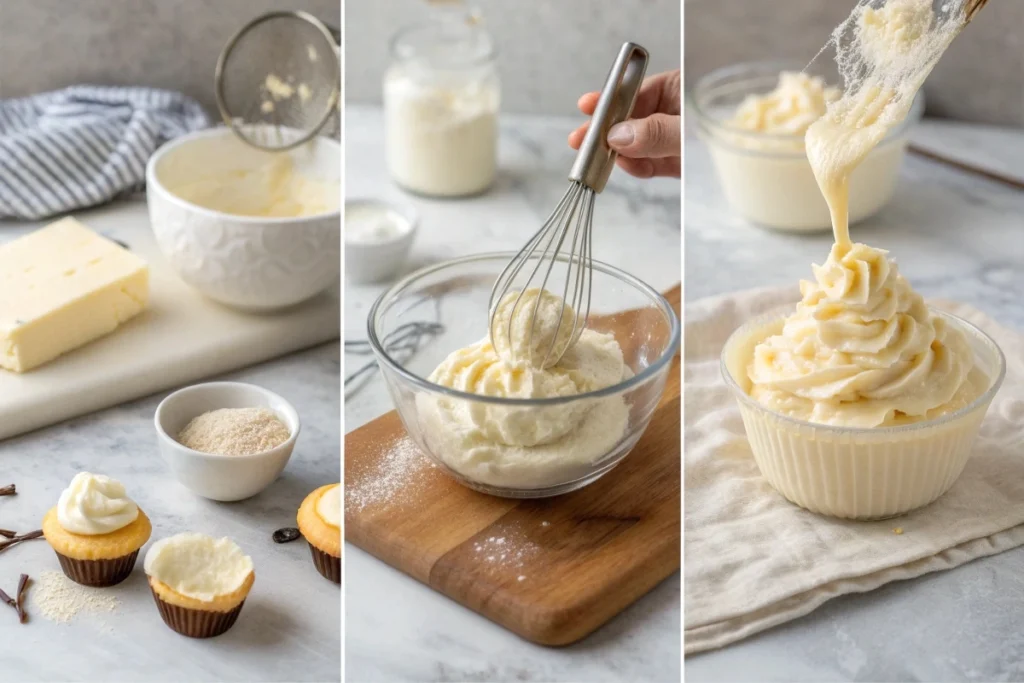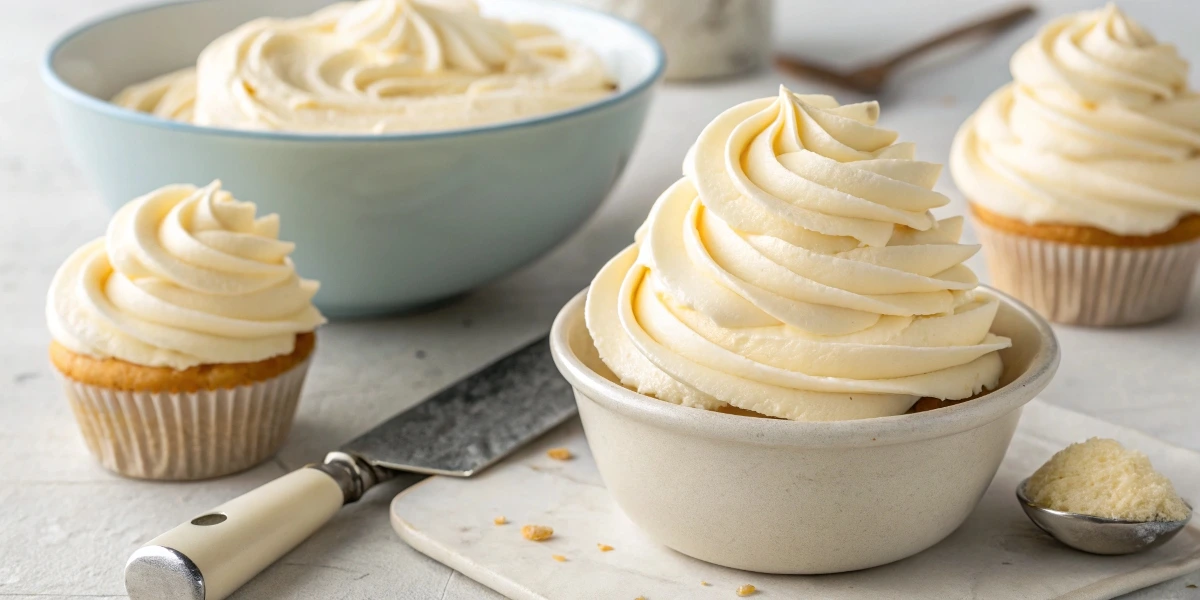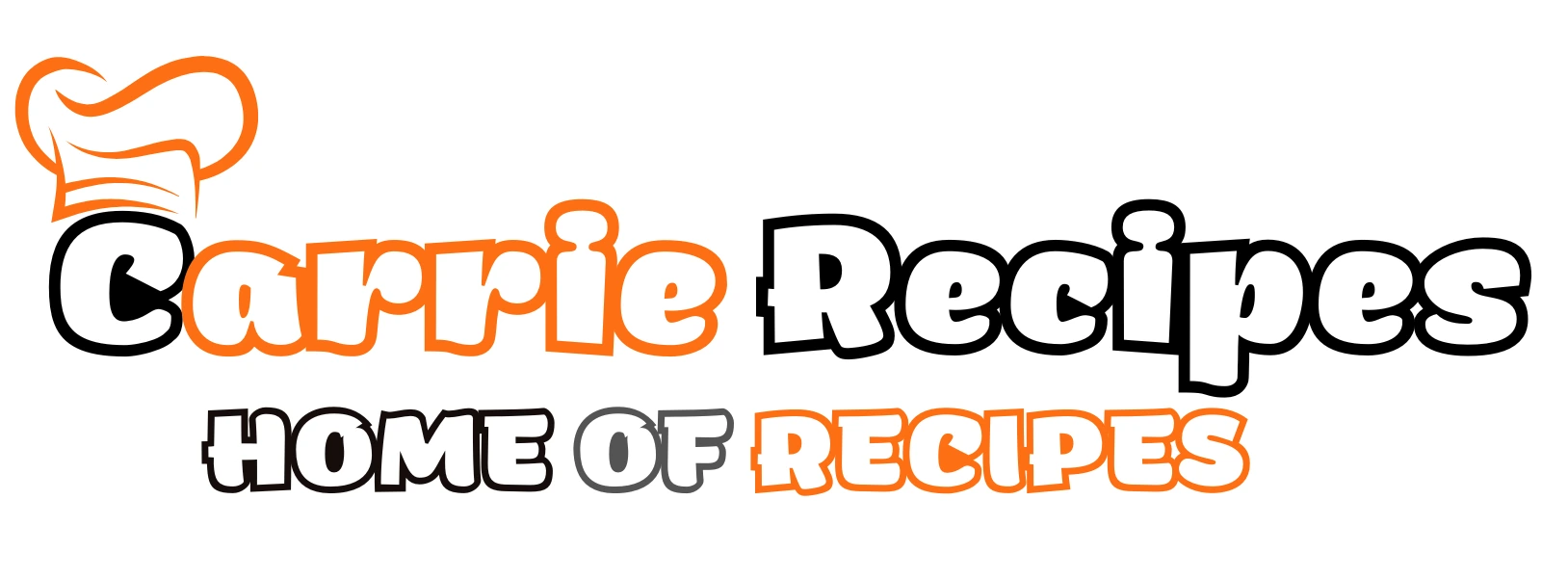Are You Tired of Lumpy or Too-Sweet Frostings?
If you’ve ever tried making buttercream frosting and ended up with something that looks more like glue than a cloud of sweetness, you’re not alone. Many beginners struggle with this classic cake topping—either it’s too stiff, too runny, or just doesn’t taste quite right.
But what if I told you that simple buttercream frosting for beginners can be smooth, sweet, and absolutely delicious—with just a few easy steps and basic ingredients?
That’s right! This beginner-friendly recipe is designed to help you whip up the perfect buttercream frosting every time—even if it’s your very first try. Whether you’re decorating cupcakes, layering a birthday cake, or just want to add a little magic to store-bought treats, this guide has everything you need to know.
Let’s dive in and discover how you can master the art of buttercream without stress, mess, or frustration.
Table of Contents
What Makes This Simple Buttercream Frosting Special?
When it comes to baking, especially for beginners, simplicity is key. That’s why this simple buttercream frosting for beginners stands out from the crowd. It’s not only quick and easy to make but also incredibly versatile and forgiving.
Here’s what makes this recipe special:
- Perfect for New Bakers : No fancy tools or complicated techniques needed.
- Quick to Make : Ready in under 10 minutes!
- Uses Basic Ingredients : Most items are already in your pantry.
- Customizable : Add colors, flavors, or textures to suit any occasion.
- Creamy & Smooth Every Time : Say goodbye to gritty or lumpy frosting!
Whether you’re preparing for a birthday party, holiday gathering, or just want to treat yourself to something sweet, this buttercream recipe will become your go-to frosting.
Time Requirements & Difficulty Level
Making this simple buttercream frosting for beginners is surprisingly fast and fuss-free. Here’s a quick breakdown:
| Task | Time Required |
|---|---|
| Gathering Ingredients | 2–3 minutes |
| Mixing the Frosting | 5–7 minutes |
| Total Time | Under 10 minutes |
Difficulty Level: Beginner-friendly (Level 1)
You don’t need any advanced baking skills or special equipment—just a mixing bowl, a spatula, and an electric mixer (or even a whisk and some elbow grease!).
This recipe is ideal for kids learning to bake, busy parents, or anyone who wants to enjoy homemade frosting without spending hours in the kitchen.
Essential Ingredients for Perfect Buttercream

The beauty of this simple buttercream frosting for beginners lies in its minimal ingredient list. Each item plays a key role in creating that creamy texture and rich flavor.
Main Ingredients:
- Unsalted Butter (1 cup / 2 sticks)
- Why it’s important: Butter gives buttercream its signature richness and body. Using unsalted butter allows you to control the salt content.
- Substitute: If you only have salted butter, reduce added salt by ½ teaspoon.
- Powdered Sugar (4 cups)
- Why it’s important: Also known as confectioners’ sugar, this fine sugar dissolves easily and creates a smooth texture.
- Substitute: Granulated sugar won’t work—it will leave your frosting gritty. However, you can blend granulated sugar into a fine powder using a blender or food processor.
- Heavy Cream or Whole Milk (2–4 tablespoons)
- Why it’s important: Adds moisture and helps loosen the frosting to the right spreading consistency.
- Substitute: You can use half-and-half or even water in a pinch, but the flavor and richness may change slightly.
- Vanilla Extract (1–2 teaspoons)
- Why it’s important: Enhances the overall flavor and adds that classic “baked good” aroma.
- Substitute: Try almond extract, lemon extract, or even peppermint for a fun twist.
- Pinch of Salt (optional)
- Why it’s important: Balances the sweetness and enhances the flavor.
- Substitute: Skip it if using salted butter.
Step-by-Step Instructions For Simple buttercream frosting

Ready to make your own simple buttercream frosting for beginners ? Let’s walk through the process step by step.
Step 1: Soften the Butter
Before mixing, make sure your butter is at room temperature. Cold butter leads to lumps and uneven mixing.
Tip: Cut the butter into small cubes and let it sit on the counter for 15–20 minutes before starting.
Step 2: Beat the Butter
In a large mixing bowl, beat the softened butter using an electric mixer on medium speed for about 1–2 minutes until it becomes light and fluffy.
Pro Tip: Scrape down the sides of the bowl occasionally to ensure even mixing.
Step 3: Add Powdered Sugar Gradually
Add powdered sugar one cup at a time while mixing on low speed. This prevents a sugar explosion and ensures a smooth mix.
Why it matters: Adding all the sugar at once can create clumps and dry spots in your frosting.
Step 4: Add Liquid and Flavor
Once all the sugar is incorporated, add the milk or cream and vanilla extract. Mix on medium-high speed for another 2–3 minutes until the frosting becomes light, airy, and silky smooth.
Consistency Tip: If the frosting is too thick, add more liquid one teaspoon at a time. If it’s too thin, add more powdered sugar.
Step 5: Taste and Adjust
Give your frosting a taste! Adjust sweetness or flavor as needed. You can add more vanilla or a tiny pinch of salt for balance.
Assembly Tips: How to Use Your Buttercream Like a Pro
Now that your simple buttercream frosting for beginners is ready, it’s time to put it to use! Here’s how to apply it beautifully:
For Cupcakes:
- Use a piping bag fitted with a star tip for a professional swirl.
- Alternatively, spread with a small offset spatula for a rustic look.
For Layer Cakes:
- Chill the cake layers first to prevent crumbling.
- Spread a thin crumb coat, then chill again before applying the final layer of frosting.
Presentation Ideas:
- Top with sprinkles, edible glitter, or fresh berries.
- Drizzle with melted chocolate or caramel sauce.
- Pipe decorative borders or write happy messages.
Pro Tip: If you’re short on time, frost the top only and spread the rest between layers.
Storage & Reheating Tips
One of the best things about this simple buttercream frosting for beginners is that it stores well and can be made ahead of time.
How to Store:
- Room Temperature: Keep covered in a bowl for up to 2 days.
- Refrigerator: Store in an airtight container for up to 1 week.
- Freezer: Freeze for up to 2 months. Thaw in the fridge overnight, then bring to room temperature before re-whipping.
How to Reheat/Revive:
- If refrigerated, let the frosting come to room temperature.
- Whip it again with an electric mixer for 1–2 minutes to restore its fluffiness.
- Add a splash of milk or cream if it feels too stiff after chilling.
Recipe Variations: Make It Your Own!
While this simple buttercream frosting for beginners is delicious as-is, there are so many ways to customize it. Here are some fun ideas:
Flavors:
- Chocolate Buttercream: Add ½ cup cocoa powder.
- Lemon Buttercream: Replace vanilla with lemon zest and juice.
- Mocha Buttercream: Add ¼ cup cooled espresso or strong brewed coffee.
- Coconut Buttercream: Add 1 teaspoon coconut extract and shredded coconut on top.
Colors:
- Use gel food coloring for vibrant hues without affecting texture.
- Natural options: Beet juice for pink, turmeric for yellow, matcha for green.
Texture Boosters:
- Fold in crushed cookies, sprinkles, or mini chocolate chips.
- Swirl in peanut butter or Nutella for a marbled effect.
Final Thoughts: Don’t Be Afraid to Frost
There you have it—a foolproof, beginner-friendly way to make simple buttercream frosting for beginners that tastes like it came from a bakery. With just a handful of ingredients and a few easy steps, you can turn ordinary desserts into showstoppers.
So grab your mixing bowl, roll up your sleeves, and give this recipe a try. Whether you’re baking for a celebration or just because, your friends and family will love the results—and you’ll love how easy it was!
Remember, practice makes perfect. Even if your first batch isn’t flawless, keep trying. After all, the best part of baking is enjoying the fruits (or frosting!) of your labor.
Happy baking!
❓ (FAQs): Simple buttercream frosting
Got questions about this simple buttercream frosting for beginners ? We’ve got answers!
Q: Is this frosting healthy?
A: While it’s not a health food, this recipe uses real ingredients and no preservatives. For a lighter version, try reducing the sugar or using a sugar substitute like erythritol.
Q: Can I make this dairy-free?
A: Yes! Use vegan butter and plant-based milk (like almond or oat) instead.
Q: How long does it take to make?
A: Just 10 minutes! It’s perfect for last-minute desserts.
Q: Can I pipe with this frosting?
A: Absolutely! This buttercream holds its shape well for piping and decorating.
Q: Does it crust over?
A: Unlike American buttercream, this one stays soft unless left uncovered for several hours.
Q: What’s the difference between buttercream and whipped frosting?
A: Buttercream is richer and denser, while whipped frosting is lighter and airier.
If you’re looking to bring the timeless beauty of traditional Moroccan craftsmanship into your home or office, be sure to visit ARTISANAT MARRAKECH MAROC on Chairish . Their curated collection features everything from handwoven Berber carpets and intricately carved cedarwood doors to elegant copper and silver ceiling hangings that add a touch of North African charm to any space. Whether you’re decorating a living room, bedroom, garden, or even a corporate office, you’ll find unique, handmade pieces crafted with generations of artistry and care. From leather poufs and engraved wooden tables to stunning Fassi tile fountains, this store is a treasure trove for anyone who loves authentic, soulful design.

